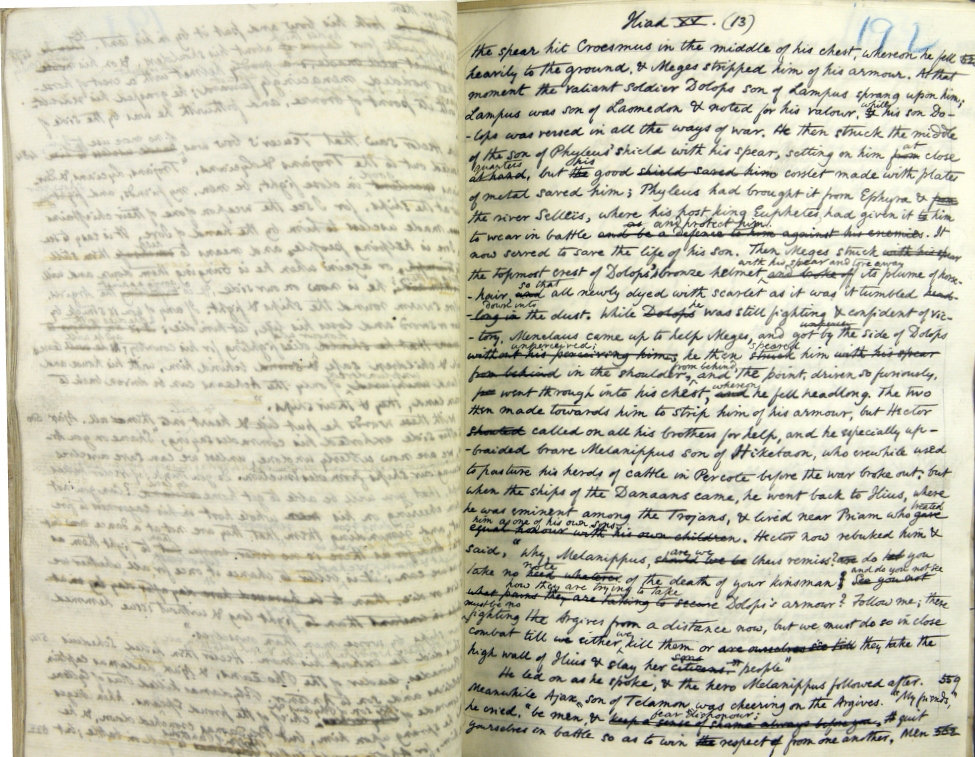The Iliad of Homer, translated by Samuel Butler

The Iliad, an ancient Greek epic by the poet Homer, narrates the story of the Trojan War. The Odyssey was generally considered a companion piece to it. Rereading the poems as an adult, Butler was struck by a radical notion: that the Odyssey was not the work of Homer, but of a ‘brilliant, high-spirited’ young woman, originating from Trapani in Sicily.
Hoping the controversy would entice a new publisher to take on his translations, Butler fleshed out a book-length argument entitled The Authoress of the Odyssey. Eventually, following numerous rejections, Longman’s agreed to publish all three books.
Conservation of the Iliad and Odyssey manuscripts
Both manuscripts were deposited in a fragile condition, with their thin paper covers having suffered substantial wear and tear. Loose dirt had also gathered in the heads of the text block (i.e. at the top edges of the leaves) of the Odyssey manuscript, encouraging the growth of white mould. Using a vulcanised rubber smoke-sponge over an air-bench, Edward Cheese and Bridget Warrington, of the Cambridge Colleges’ Conservation Consortium, were able to remove the dirt and mould.
 Before treatment
Before treatment
 After treatment
After treatment

The Iliad manuscript had to be flattened, using a low-temperature tacking iron through a protective layer of silicon paper. The covers of both manuscripts were then repaired using Japanese handmade paper, and the weakened page-edges and tears were repaired using a fine Japanese tissue and purified wheat-starch paste. Protective Melinex® wrappers were fitted to both manuscripts, affording the covers extra protection, and each manuscript was housed in a made-to-measure drop-back box.
